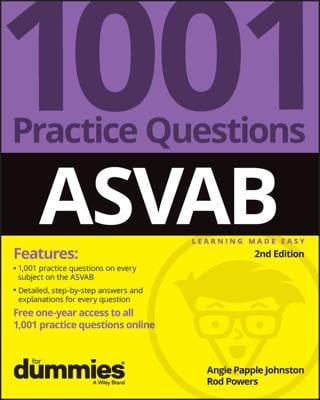Many people may find the second type of Assembling Objects problem on the ASVAB easier than the connection problems. This type of problem is very much like a jigsaw puzzle, except it doesn’t result in a picture of the Statue of Liberty or a map of the United States.
Also, there’s a heck of a lot fewer pieces than that 1,000-piece puzzle your grandma kept wanting you to help her with. The difficulty lies in the fact that you can’t use your hands to twist the pieces around on the table in order to see how they fit. You have to rotate and move the pieces mentally.
Here, the solution is pretty straightforward.

By mentally sliding the shapes in the first drawing together, it’s easy to see that they fit together to form the picture shown in Choice (A).

Choice (A) is the correct answer. The figure shown in Choice (A) is the same as the figure depicted in Choice (A) of the first example, except it’s been rotated.
The previous two examples were warm-up exercises — the questions on the ASVAB are harder. Check out this example for a better representation of the types of questions on the ASVAB.

Pay attention to the curve of the leaf shape inside the square. It’s not bowed out as in Choice (B) — the edges have more of a wave shape. Choice (C) has that shape too thin. If you selected Choice (D) as the correct solution, give yourself a pat on the back. Examining spatial relationships can help locate the correct answer with ease. Try a couple more examples to see if you’ve gotten the hang of it.

Choice (B) is the correct answer. Mentally rotate and relocate the pieces in the first picture until you can see how they fit together to form the shape in Choice (B). In the puzzle, three pieces have both a curved edge and a single straight edge.
Practice eliminating choices that lack these characteristics. Choice (A) lacks these shapes, so you can discount it right away. Notice the curved pieces are all different sizes. Visualize fitting these pieces of the puzzle in your mind and compare the sizes and differences.

Choice (A) is the correct answer.

